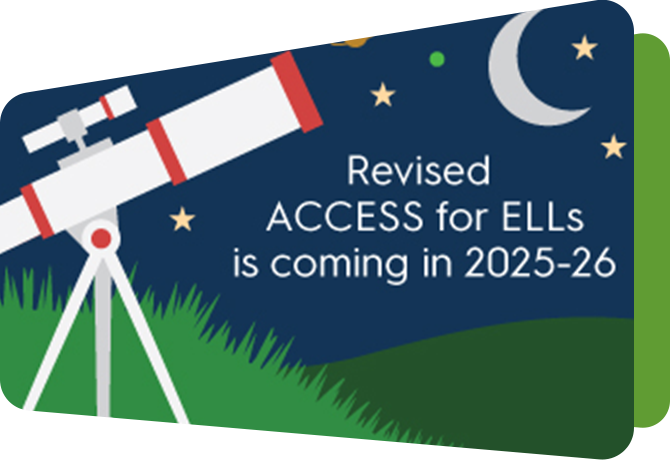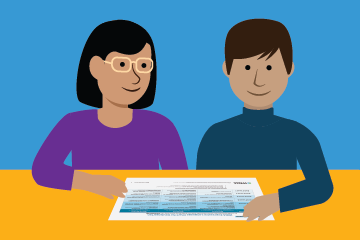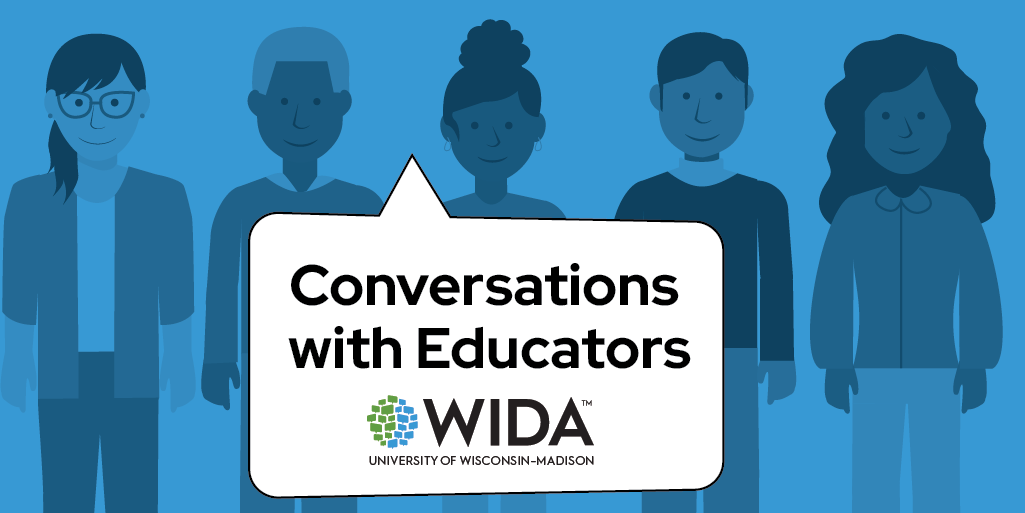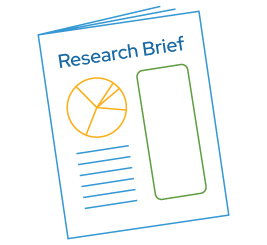Introduction
Collaboration, communication, critical thinking and creativity are among the “4Cs” identified as 21st century learning and innovation skills (Partnership for 21st Century Skills, 2014). Group-based learning designs have the potential to foster these crucial skills in English Language Learners (ELLs), particularly when the group engages in collaborative learning (two or more individuals creating new knowledge together [Lee & Smagorinsky, 2000]. Group work can promote both content learning (Kagan & McGroarty, 1993) and language acquisition (Mackey & Gass, 2006). While there is a long tradition of research on group work for academic content learning in mainstream students (Johnson & Johnson, 2009; Slavin, 1995), little work has focused on how to optimize group work for ELLs, particularly in content classrooms (see “WIDA Focus on Group Work for Content Learning” for a review of the existing literature).
This research brief reports preliminary results from a study of teachers’ successful experiences engaging ELLs in collaborative learning with peers. Participants were eight teachers (ESL or content area) in upper elementary and middle school contexts located in WIDA states. Although each teacher’s success story is unique, several recurrent themes have emerged as ingredients for success.
To provide a more comprehensive picture of the entire 2009–10 cohort, we also identified potentially proficient and dropped ELs. Potentially proficient ELs included students who reached a composite proficiency level of at least 4.5 within six years. Although we were able to track students who moved within states, we were not able to track students who moved out of state or out of the country; we refer to this latter group as dropped ELs because they were dropped from the analytic cohort.
Theme 1. Develop classroom norms of effective group work
Teachers reported that it was important to guide students in constructing norms of interaction that supported group-based learning. To this end, teachers made careful observations of students’ group work skills at the beginning of the school year. Then, teachers led classroom discussions about what kinds of behaviors contributed or detracted from students’ opportunities to learn in groups. Students and teachers co-constructed shared understandings of desirable ways to ask for help, offer feedback, share responsibilities, define the group’s goals, and resolve conflicts. Throughout the year effective group work norms were sustained and refined via teacherled classroom reflections, individual self-evaluations and small group self-evaluations. Some teachers created collaborative learning rubrics that students were asked to complete after each group work session.
Theme 2. Provide language support
Teachers emphasized that for ELLs to be successful in small group learning environments, language support was critical. Content teachers reported collaborating with ELL specialists to provide their ELLs with appropriate language supports. In addition to providing ELLs the usual graphic and sensory supports, teachers mentioned assigning newcomer ELLs to a non-ELL “buddy” who was responsible for helping the newcomer participate as fully and successfully as possible in the classroom. Content teachers also reported working with ELL specialists to pre-teach content to ELLs, differentiate instruction, and provide ELLs practice communication moves that are needed for group work (for example taking turns, asking questions, confirming understanding, paraphrasing, elaborating and providing feedback on peers’ ideas, negotiating responsibilities and goals, and handling disagreements).
Theme 3. Group students strategically
Teachers gave serious consideration to how they grouped students. Teachers considered not only English proficiency and academic proficiency, but also factors rarely considered in the research literature such as personality, social and emotional development, friendships and familiarity. While teachers usually created groups that were diverse with respect to English and academic proficiency, at times they grouped together students sharing a common home language and students with beginning skills in English. Most teachers reported that keeping students in a ‘home group’ comprised of the same small group of three-four students for the duration of the school year was more effective than frequently rearranging groups.
Theme 4. Create assignments that engage all students in meaning-making
When asked what kinds of tasks are assigned to students working in groups, several teachers emphasized the importance of creating assignments that granted students freedom to use their creativity and develop their problem-solving skills. A few teachers reported that ELLs thrived when group work was used in combination with project-based learning approaches wherein students could design their own projects.
Theme 5. Collaboration as a school-wide value
Teachers attributed their success to the support of administrators (the principal in particular) for collaborative learning designs. The most important resource administrators could provide in this regard was planning time, especially joint planning time for collaboration between content teachers and ELL specialists. In schools where collaboration was explicitly valued and was an instructional goal across content areas, students benefited from the multiple opportunities to develop collaborative learning skills.
Conclusion and Further Research
A unifying theme of this study is that successful collaborative learning takes significant planning and preparation as well as on-going monitoring and refinement. The teachers who participated in this study valued collaborative learning for its potential to boost ELLs’ social and academic engagement in the classroom and school, and for the gains in content and language proficiency teachers observed. This study is limited in that it relies on the narratives of a small sample of self-selected teachers. Yet the goal of the study is to develop hypotheses about the most important factors contributing to successful collaborative learning for ELLs. Whether the five themes identified are generalizable beyond this study is an empirical question. Another important limitation of this study is that although participants attribute their students’ success to specific factors, the causal relationships suggested by teachers are speculative. Experimental research designs (with random assignment to a control or treatment group) could provide further evidence of the causal powers (and relative importance) of the factors identified in teachers’ narratives.
References
Johnson, D. W., & Johnson, R. T. (2009). An educational psychology success story: Social interdependence theory and cooperative learning. Educational Researcher, 38(5), 365–379. Washington, DC: American Educational Research Association (AERA).
Kagan, S., & McGroarty, M. (1993). Principles of cooperative learning for language and content gains. In D. D. Holt (Ed.), Cooperative learning (pp.47–66). Washington, DC: Center for Applied Linguistics.
Lee, C. D., & Smagorinsky, P. (Eds.). (2000). Vygotskian perspectives on literacy research: Constructing meaning through collaborative inquiry. Cambridge, UK: Cambridge University Press.
Lee, N., Cortada, J., Grimm, L. (March, 2013). “WIDA Focus on group work for content learning” WIDA Consortium, University of Wisconsin-Madison: Madison, WI.
Mackey, A., & Gass, S. (2006). Introduction to special issue on new methods of studying L2 acquisition in interaction. Studies in Second Language Acquisition, 28(2), 169–178.
Partnership for 21st Century Skills (2014). Framework for 21st Century Learning. Retrieved from http://www.p21.org/about-us/p21-framework.
Slavin, R. (1995). Cooperative learning: Theory, research, and practice (2nd Ed.). Boston, MA: Allyn & Bacon.





